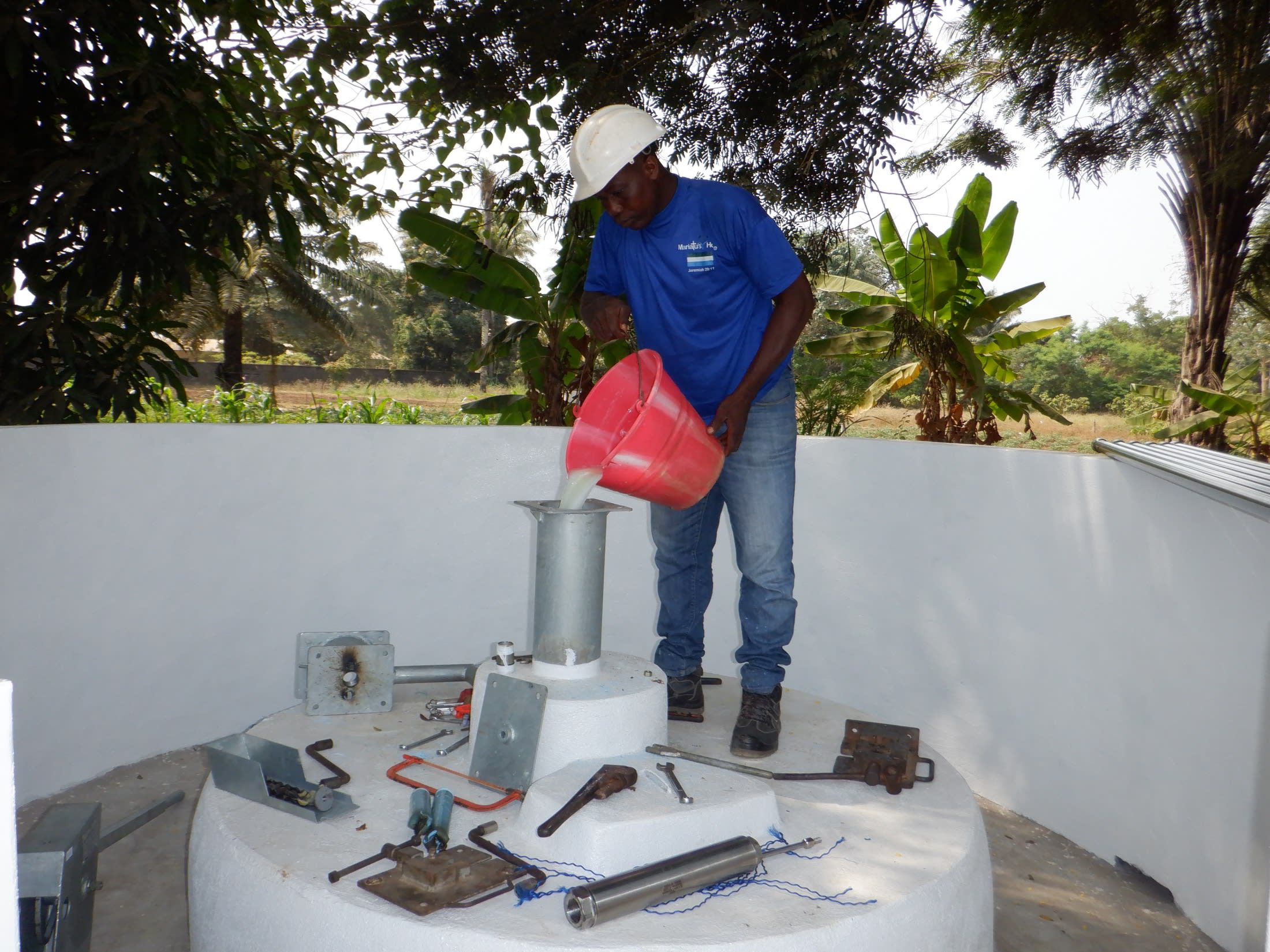Access to sufficient, safe water is a year-round problem for the 635 students and 31 staff of St. Augustine Jr. Secondary School in Tintafor. Students and staff would love to employ their school motto (seen below), "You reap what you sow," but the current water scarcity issues make it impossible because they spend all their energy collecting water.
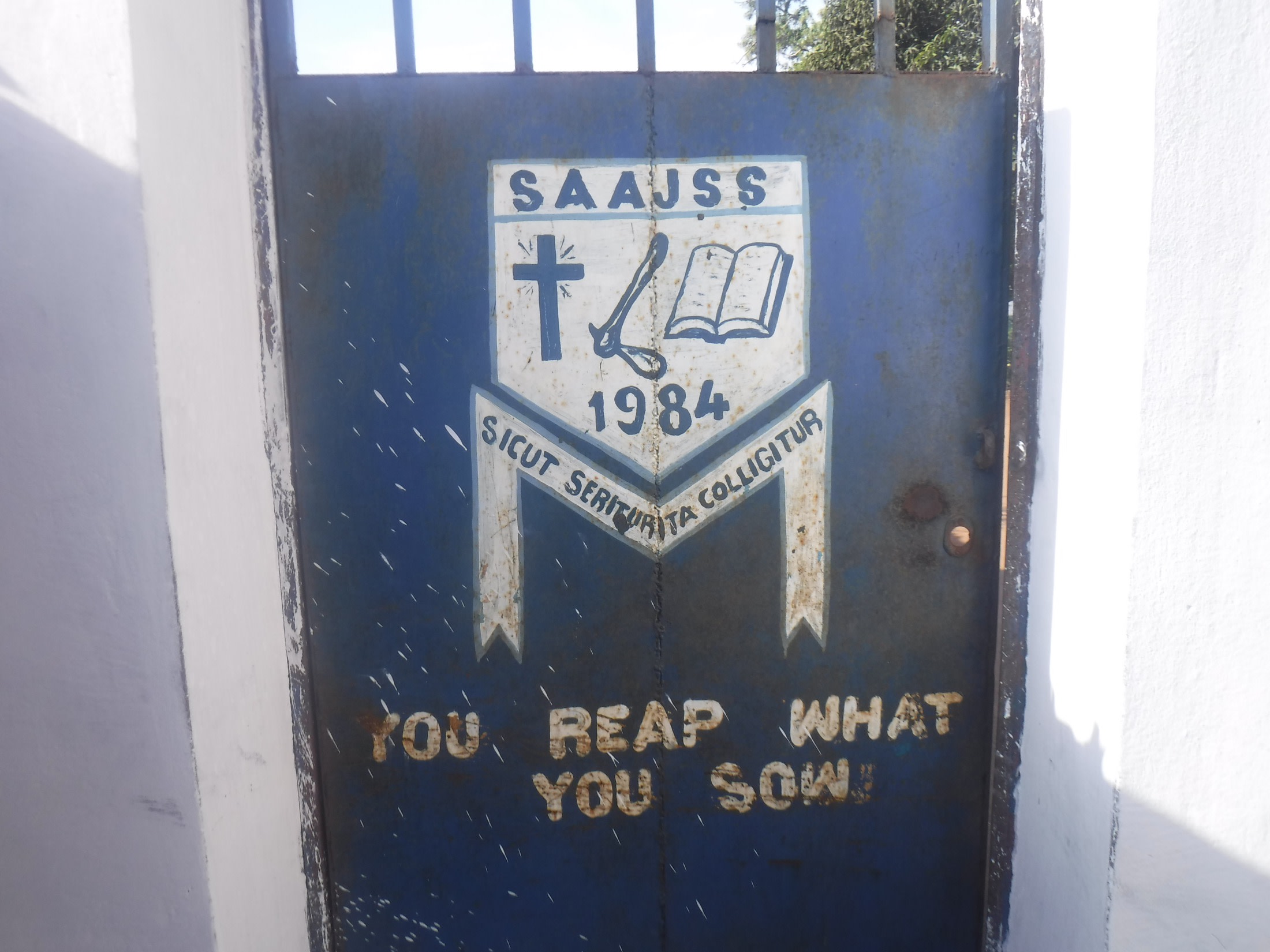
"I hate being at this school throughout the day without getting water to drink," said 12-year-old student Jamestina K (seen below). "The tap is sometimes not providing water for us. That is why it would be difficult for me to get drinking water at school."
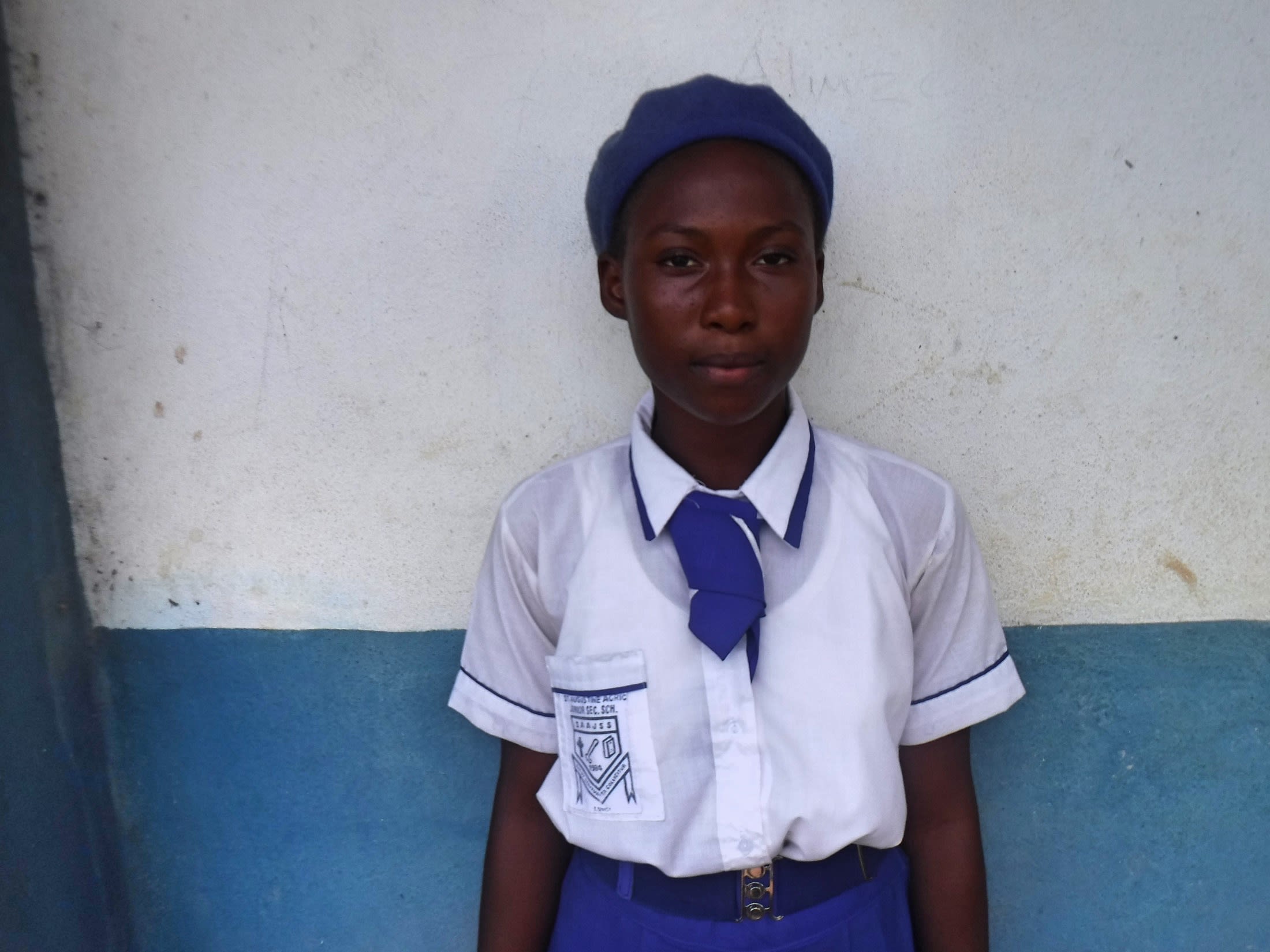
"It is difficult to stay at this school throughout the day without the effective use of water," said 38-year-old teacher Anthony Alieu Bah (shown below teaching). "The number of pupils and staff of this school is more than the quantity of water available to use every day. This causes [students to spend] more time going out in search of drinking water [and] the remaining time would not be enough for me to teach. The pupils are exceedingly difficult to oversee, [and they have difficulty paying] attention in class when there is not enough water for them to drink or use."
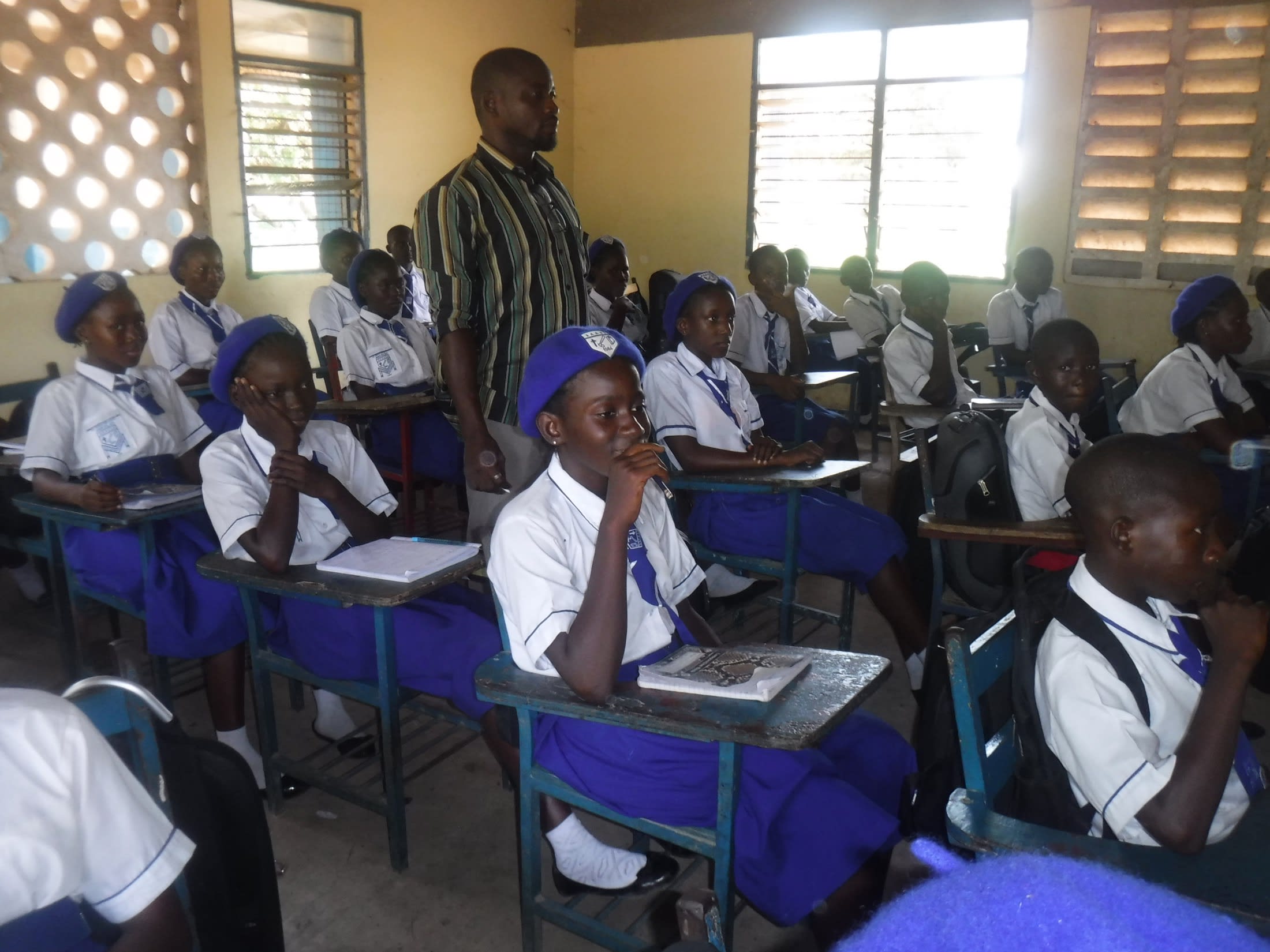
There is a hand-dug well on the school campus, but it is not functioning correctly and does not offer much water. The dry season is incredibly challenging because the water level falls so low that the little water available has an off-putting color and odor.
Since the well cannot provide enough usable water, the students have only a few less-than-ideal alternatives. They can carry water with them to school, which is exhausting; they can purchase water from vendors, which most cannot afford; or they can try to collect water from another well located off the school campus at the agricultural center. This well provides water for both the agricultural center and a poultry farm, so it is overtaxed and unable to provide enough water to meet the additional needs of the school. Trips to this well waste the pupils' time. They end up standing in long lines without water to show for it.
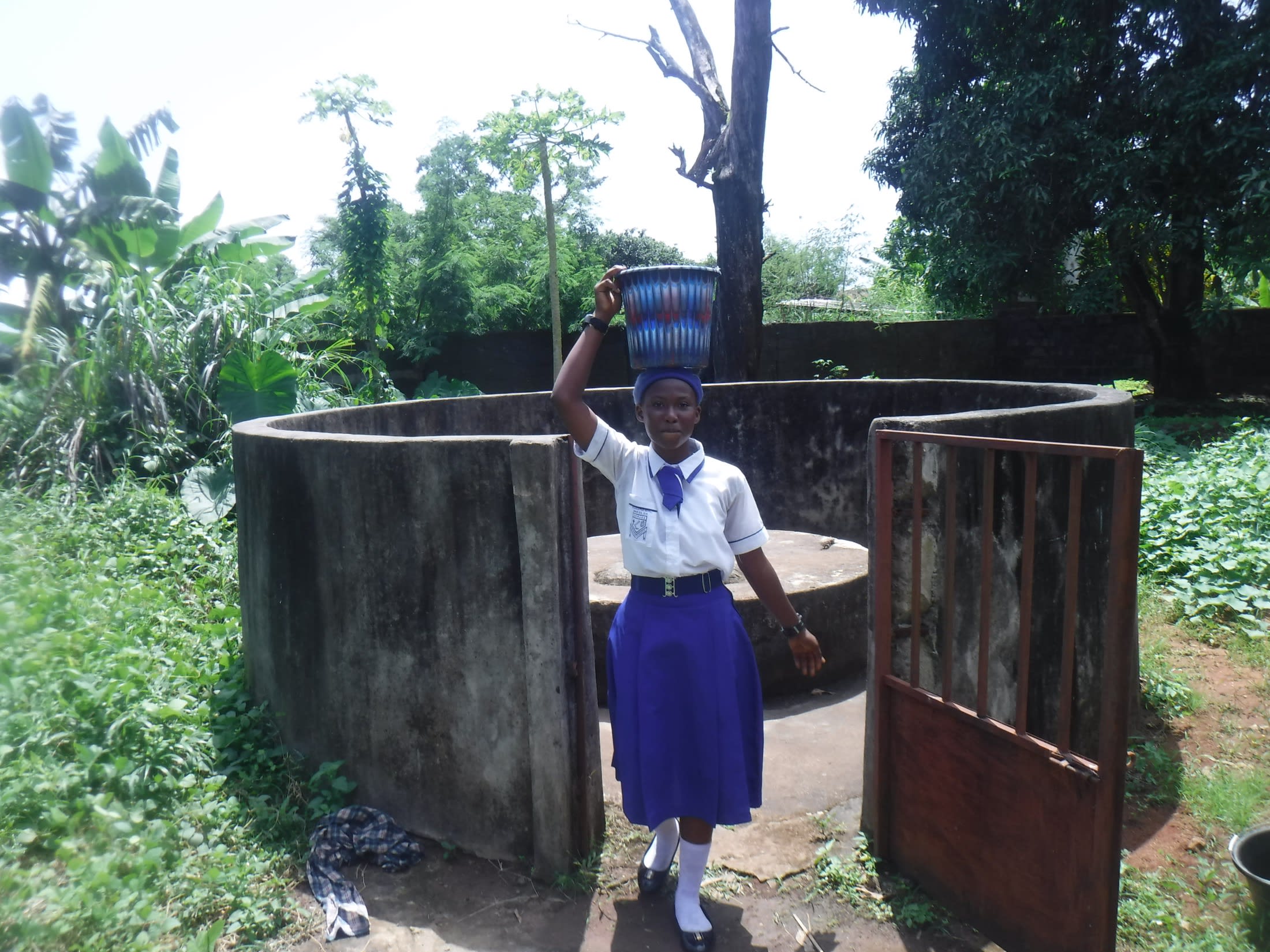
"I sometimes bring bottles of drinking water to school from my house. It is not enough to serve me throughout the day. It would finish during lunch after I had completed eating my food. I could only get water from the food vendors when I buy food from them to eat," continued Jamestina (shown above carrying water from the alternative well).
"When the water shortage gets intense during the dry season, the only way that I could get [water] to drink at this school is to buy a bundle of packet water from the community vendors to drink," said Mr. Bah.
When students cannot find water on the school campus, they will sadly drink any water they find. Of course, this increases their risk of contracting waterborne illnesses. When they inevitably contract typhoid, worms, or other water-related illnesses, they suffer unnecessarily and lose even more class time.
The lack of water access not only reduces available drinking water, keeping students thirsty and out of class, but also affects the school's overall sanitation and hygiene, making essential functions like using the latrines and washing hands very challenging.
"I cannot use the latrine without enough water. I prefer to wait 'til I go home. Sometimes it is not easy for me to wait, [as] I would be urgent to use the school latrine. The condition would not be good, but I have no option. There is also not enough water to use at the handwashing facility. This prevents me from washing my hands effectively," concluded Jamestina.
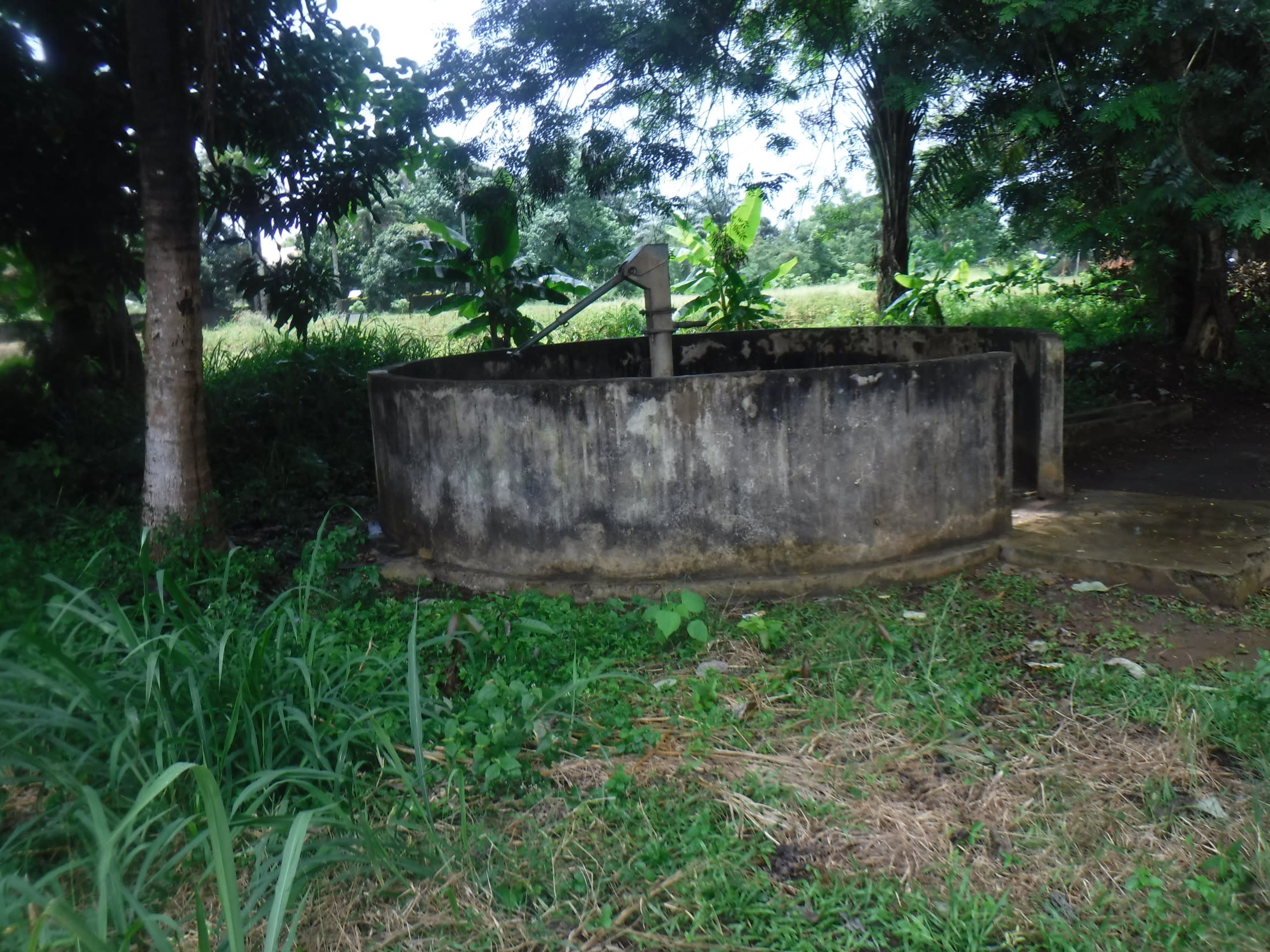
The repairs needed to rehabilitate the school's well (shown above) should make plenty of water available year-round for all of the school's needs. It will give students easy, quick access so they can have plenty to drink, properly maintain their hygiene and get back to class so they can focus on learning.
Here's what we're going to do about it:
Well Rehabilitation
The well marked for this overhaul is dry for a few months every year and needs major work to supply adequate, clean water to the community year round. The pump will be removed, and a hand auger will be lowered inside and powered by a drill team. This hand auger will allow the team to drill several meters deeper to hit a sufficient water column that will ensure the well supplies water throughout all seasons.
As the team drills, casing will be installed, transforming the bottom of this hand-dug well into a borehole. PVC piping will connect this lower system directly to the pump, a construction that we know will also improve the quality of water.
Once this plan is implemented, everyone within the community will have access to safe drinking water in both quality and quantity, even through the dry months.
Hygiene and Sanitation Training
There will be hygiene and sanitation training sessions offered for three days in a row.
After our visit, the hygiene and sanitation trainer decided it would be best to teach community members how to build a tippy tap (a hand-washing station built with a jerrycan, string, and sticks). They will use these tippy taps for handwashing demonstrations, and will also teach about other tools like dish racks and the importance of properly penning in animals.
These trainings will also strengthen the water user committee that manages and maintains this well. They enforce proper behavior and report to us whenever they need our help solving a serious problem, like a pump breakdown.

 Borehole Well and Hand Pump
Borehole Well and Hand Pump












